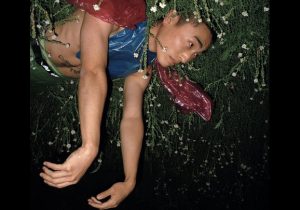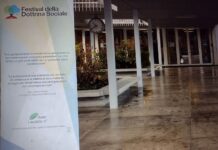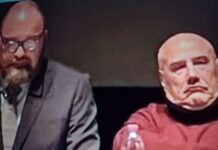Then there are exhibitions on historical photography with special cuts, such as, for example, Sammlung Müller-Jentsch (Nollendorfstraße 35) ‘Pioneers of ski photography’ by Emanuel Gyger; another name: Arnold Klopfenstein, a pioneering work in ski photography in the 1920s and 1930s when this sport was an expression of individuality and self-realization, the spirit of time embodied by the thrill of speed, elegance of body control and technical precision. The two Swiss photographers were masters in directing the play of light and shadow, in the use of the backlight, and techniques for capturing dynamic movements.

There is no shortage of exhibitions dedicated to the themes of ecology. Hydroelectric power is currently the greatest threat to rivers. At the University of Applied Sciences Europe Berlin, Fachbereich Art & Design-Photography (Dessauer Straße 3-5) the photo ‘The Vjosa River, the blue heart of Europe’ show the natural waterway of the Vjosa, 270 km long, one of the oldest rivers in south-eastern Europe. Flowing from Greece to Albania, the Vjosa winds through a wide valley that is the ideal habitat for many species of migratory birds. River terraces are useful to villagers for agriculture and breeding, while the diversity of fish provides livelihoods for local fishermen. Over the next few years, the planned construction of eight hydroelectric power stations means that the landscape and adjacent towns on its shores are set to disappear.
The ARTCO Galerie Berlin (Linienstraße 141) offers Roger Ballen, a great of imaginative photography whose existential psychodramas arrive here at the figure of the character of ‘Roger the mouse’, a masked character who lives his life in an enigmatic Johannesburg and surrounding itself with mice and mannequins collected from various places. A surreal, absurd, disturbing condition, since it reveals many repressed aspects of the human condition.
Minorities, traditions and identities: issues addressed by Marcus Glahn in ‘What Remains’ and by Alina Simmelbauer at the Projektraum Sankt Studio (Mittenwalder Straße 15). With the popular success of right-wing political groups, democracy is suddenly under discussion. These are images with a documentary character that combine historical memory and current events. In García’s Daughter, Alina Simmelbauer presents the children of people from socialist “brother states” under contract to work in East Germany, where they never integrated. Or the Transylvanian Saxons by Marcus Glahn, an ethnic minority that is the oldest existing group of German settlers in Eastern Europe.
At the Südost Europa Kultur eV (Großbeerenstraße 88 2. OG) the exhibition by York Wegerhoff, ‘Shadowy Light – 25 years of Dayton, too many are still fighting the war in Bosnia’. Thousands of migrants stranded along Balkan route at EU’s external border in Bosnia-Herzegovina, are a consequence of the fact that, after November 1995, year of the Dayton Peace Agreement that ended the bloody civil war in Bosnia and Herzegovina by dividing the country along ethnic and religious lines, any potentially positive change was nipped in the bud. A serious challenge for the EU, which here is called upon to demonstrate its political will in order to bring about real change.
At the Galleria Borch (Goethestraße 79) Fiona Tan is inspired by Tommaso Moro and by his ‘Utopia’ with the exhibition ‘Ideas of Utopia’. His photoincision projects conceive of today’s Los Angeles as the original island of Moro: an ideal society for its inhabitants.







